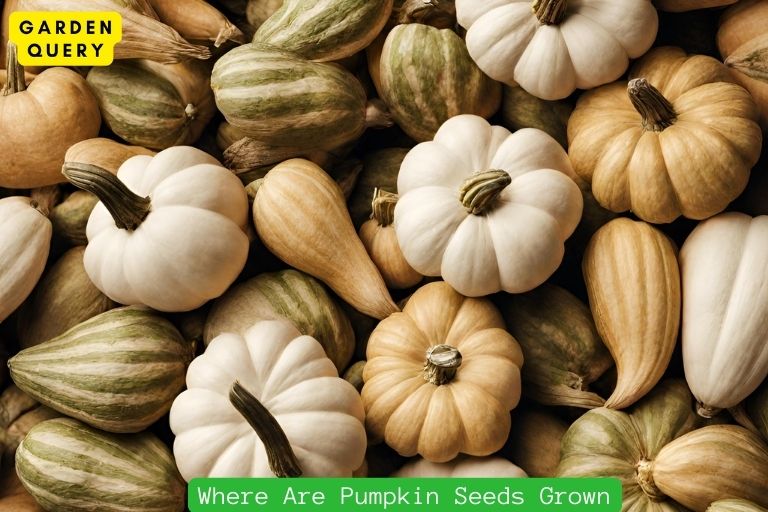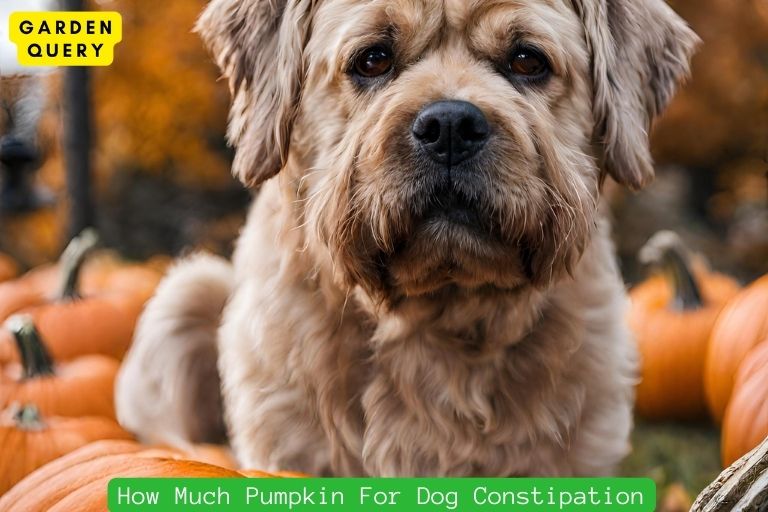What Do Pumpkin Sprouts Look Like?
Pumpkin sprouts typically emerge as small, pale green shoots with tender leaves, often resembling miniature, delicate vines in their initial growth stages.
Pumpkin sprouts appear as delicate, pale green shoots emerging from the soil, developing tiny leaves and tendrils that grow into vine-like structures. These sprouts showcase a tender and fragile appearance, starting with minimal foliage that gradually develops into the distinct, lobed leaves associated with pumpkins.
As they mature, these sprouts become more robust and form the characteristic sprawling vines that support the growth of pumpkin fruits. The sprouts’ growth pattern typically involves rapid expansion and a tendency to extend horizontally, showcasing their unique vine-like nature.
Key Takeaway
Characteristics of Pumpkin Sprouts
When it comes to identifying pumpkin sprouts, there are certain characteristics that can help you recognize them with ease. Here are some key features to look out for:
- Appearance: Pumpkin sprouts typically emerge as small, slender stems with one or two small leaves. The leaves are usually green in color and have a rounded shape with jagged edges. These initial leaves are known as cotyledons and are different from the later true leaves of the pumpkin plant.
- Growth pattern: Pumpkin sprouts grow upward from the soil, reaching towards the sunlight. As they develop, they will continue to produce additional leaves and extend their stems, gradually taking on a more robust and recognizable pumpkin plant form.
- Leaf structure: The leaves of pumpkin sprouts have a distinctive texture. They are slightly fuzzy or hairy to the touch, which provides some protection against pests and helps retain moisture.
- Vine development: As pumpkin sprouts mature, they will start to develop vines. These vines can extend horizontally and spread out across the ground, allowing the plant to cover a significant area. The vines are initially thin and flexible, but they become tougher and more rigid as the plant grows.
- Color variations: While pumpkin sprouts generally have green leaves, it’s worth noting that different pumpkin varieties may exhibit slight variations in leaf color. Some may have darker green leaves, while others may have a lighter shade of green or even a slight bluish tinge.
- Growth rate: Pumpkin sprouts are known for their rapid growth rate, particularly in warm and sunny conditions. With sufficient water, sunlight, and nutrients, they can grow several inches per week, quickly establishing themselves as healthy and vigorous plants.

These characteristics can help you identify and differentiate pumpkin sprouts from other types of sprouts or weeds while gardening. By understanding what pumpkin sprouts look like, you can better care for them as they grow, ensuring a successful pumpkin harvest.
Remember that while pumpkin sprouts are an exciting early sign of growth, they will eventually develop into larger plants with sprawling vines and iconic orange pumpkins. With proper nurturing and attention, you can enjoy the delight of watching these sprouts flourish and transform into beautiful pumpkin plants.
Initial Growth Stage
When it comes to the initial growth stage of pumpkin sprouts, there are a few key characteristics you should be aware of.
Firstly, pumpkin sprouts typically emerge from the soil as small, thin stems with two small cotyledon leaves. These leaves are usually rounded or oval-shaped and can vary in color from pale green to a slightly more vibrant shade. The cotyledon leaves serve as the initial energy source for the young plant until the true leaves begin to develop.
As the pumpkin sprout continues to grow, you will notice the emergence of the true leaves. These leaves are usually larger and more defined compared to the cotyledon leaves. They often have a lobed or palmate shape, with deep, jagged indentations and a vibrant green color. The number of true leaves can vary depending on the pumpkin variety, but it is common to see three to five leaves at this stage.
In addition to the leaves, you may also observe the appearance of tiny tendrils or vines. These tendrils are thin, curling structures that serve the purpose of supporting the growing plant as it climbs and spreads. They often wrap around nearby objects or attach to trellises and fences.
During the initial growth stage, it is essential to provide the pumpkin sprouts with proper care and attention. Make sure they receive adequate sunlight, water, and nutrients to promote healthy growth. Keep an eye out for any signs of pests or diseases and take prompt action if necessary.
Remember, the initial growth stage is just the beginning of the pumpkin’s journey. With proper care and nurturing, these sprouts will continue to grow and develop into strong, fruitful plants that will delight you with their vibrant foliage and delicious pumpkins come harvest time. So, observe, cherish, and support your pumpkin sprouts as they embark on their exciting growth journey.
Seed Leaves and True Leaves
When you begin your pumpkin growing journey, it’s essential to understand the different stages of a pumpkin plant’s growth. One important distinction is between seed leaves and true leaves.
Seed leaves:
The first set of leaves that appear after the pumpkin seed has germinated are called seed leaves, also known as cotyledons. These leaves are initially responsible for providing nutrients to the seedling until it can develop its true leaves. Seed leaves are usually shaped differently from the true leaves that will grow later on. They may be thicker, more rounded, or have a slightly different coloration. The purpose of seed leaves is to support the young plant until it can produce its energy through photosynthesis.
True leaves:
True leaves are the second set of leaves that develop after the seed leaves. These leaves look more similar to the mature leaves of a pumpkin plant. They are usually larger, more elongated, and have a serrated or lobed shape. True leaves are responsible for producing energy through photosynthesis by capturing sunlight and converting it into food for the plant. As the pumpkin plant continues to grow, it will develop additional true leaves, increasing its ability to photosynthesize and providing more energy for growth.
Understanding the difference between seed leaves and true leaves is vital for monitoring the growth and health of your pumpkin sprouts. It allows you to identify when the seedlings are ready for transplanting and when they are developing as expected. Once your pumpkin plants have developed their true leaves, they are typically ready to be transferred to a larger container or planted directly into the garden.
Remember to provide your pumpkin sprouts with adequate sunlight, regular watering, and proper nutrition to ensure healthy growth. Watching the transformation from seed leaves to true leaves is a fascinating part of the pumpkin growing process and a sign of progress towards a bountiful harvest.
So keep a close eye on your pumpkin sprouts, and soon enough, you’ll be rewarded with a vibrant and thriving pumpkin patch.
Identifying Healthy Sprouts
When it comes to pumpkin sprouts, it’s important to know what they look like in order to ensure their health and viability. Here are some key characteristics to help you identify healthy pumpkin sprouts.
First, healthy pumpkin sprouts will have a vibrant green color. They should appear fresh and full of life. Avoid sprouts that have a yellowish or wilted appearance, as these may indicate poor health or lack of nutrients.
Another important characteristic to look for is the presence of multiple leaves. Healthy sprouts will have several leaves already developed, indicating that the plant is growing well. Avoid sprouts with just one or two leaves, as they may be weak or stunted in their growth.
Additionally, healthy pumpkin sprouts should have sturdy stems. The stem should be firm and upright, providing support for the leaves. Avoid sprouts with weak or floppy stems, as these may struggle to grow properly.
It’s also important to check for any signs of pests or diseases. Healthy sprouts should be free from any visible damage or infestation. Inspect the leaves and stem carefully for any discoloration, spots, or signs of insect activity. If you notice any suspicious markings or pests, it’s best to remove and discard the sprout to prevent further spread of the problem.
Lastly, healthy pumpkin sprouts will exhibit consistent growth. They should appear uniform in size and shape, with similar leaf development across the plant. Avoid sprouts that show stunted growth, irregular leaf patterns, or asymmetrical shape, as these may indicate underlying issues.
In conclusion, identifying healthy pumpkin sprouts involves looking for vibrant green color, multiple leaves, sturdy stems, absence of pests or diseases, and consistent growth. By paying attention to these key characteristics, you can ensure the health and vitality of your pumpkin sprouts and set them on the path to flourishing into healthy pumpkin plants.
Conclusion
In conclusion, pumpkin sprouts are the first sign of growth in a pumpkin plant. They have distinct characteristics that make them easy to identify. Pumpkin sprouts typically emerge as small, green shoots from the soil. They have two small leaves, known as cotyledons, that resemble miniature versions of the mature pumpkin leaves. These leaves help the sprouts absorb sunlight and start the process of photosynthesis.
As the sprouts continue to grow, they develop a vine-like structure. This vine-like growth enables them to spread out and cover a larger area. The leaves of the pumpkin plant grow larger and start to display the classic lobed shape associated with pumpkins.
It’s important to note that pumpkin sprouts can be delicate and vulnerable during the early stages of growth. They require proper care, including adequate watering, sunlight, and protection from pests and disease. Regular monitoring is key to ensure the well-being of the sprouts and to address any issues that may arise.
By understanding what pumpkin sprouts look like, you can easily identify them and care for them in the crucial early stages of growth. With patience and dedication, you can help these sprouts flourish into healthy pumpkin plants that bear plenty of delicious pumpkins.
So, whether you are a gardening enthusiast or simply curious about the pumpkin plant’s life cycle, knowing what pumpkin sprouts look like is an important piece of knowledge. Keep an eye out for those little green shoots, and you’ll be on your way to a successful pumpkin growing experience. Happy gardening!
- Best Therapists In Dallas - February 1, 2024
- Holly Willoughby Husband: Holly Willoughby’s Love Story - January 30, 2024
- Holly Willoughby Dress: 5 Style Secrets and 7 Must-Know Career Milestones - January 30, 2024





